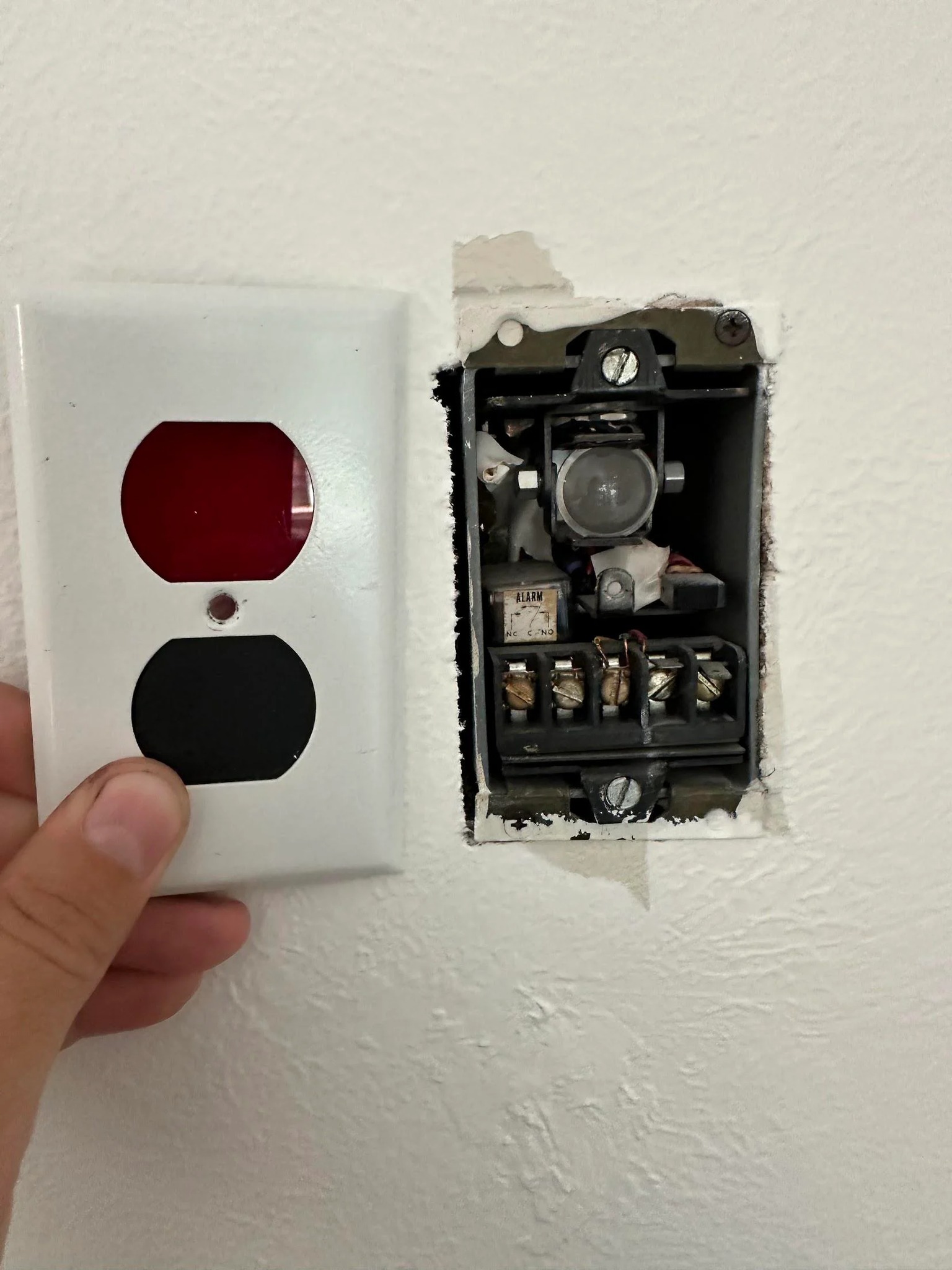Imagine stepping into a home built decades ago, a charming piece of history full of vintage touches, creaky floorboards, and perhaps some outdated outlets on the wall. But what if one of those so-called “outlets” wasn’t an outlet at all? What if it was something far more advanced than you’d expect from the 1940s—a hidden security feature using nothing but a beam of light?

That’s exactly what the Detect-O-Ray was: a state-of-the-art home protection device from the early forties that relied on light instead of today’s digital sensors or motion detectors. It wasn’t flashy, but it was brilliant. Built on a photoelectric principle, the Detect-O-Ray worked by sending a light beam—often infrared—from one side of a hallway or room to a receiver or a reflector on the other end. When someone or something crossed that beam and broke the signal, the system would instantly trigger an alarm.
This wasn’t just for dramatic effect—it served as a wake-up call, quite literally, for homeowners. While it may sound like something from a science fiction story, these systems were very real and incredibly effective for their time. Homeowners and small businesses alike used them in various settings. You might’ve found them set up in long hallways, at entry doors to storefronts, or even lined around the perimeter of larger properties. The idea was to create an invisible, silent perimeter of protection, and if that line was crossed, it was time to take notice. It functioned much like a hidden intercom system, quietly monitoring without drawing any attention to itself.
Fast forward to today, and you might just stumble across remnants of these old systems, especially in older homes in places like Hoboken or other areas known for their well-preserved historic residences. You might see what looks like a reddish or dark lens on the wall—something that seems out of place, like an outdated outlet or strange wall fixture. If you look closely, you might realize that these were once part of a primitive but effective infrared security system.
They came in pairs, each device installed opposite the other, and they were always aligned across open spaces—usually hallways or entrance areas—where a beam of light could travel uninterrupted. If the beam was broken, even briefly, the system would react. That’s how it was designed. It operated best in the dark or in low-light conditions, so the beam could go undetected while quietly protecting the space. This setup gave homes a surprisingly advanced level of protection for the time, much like having a secret intercom system embedded in your walls. These devices, like the original Detect-O-Ray, have largely faded from use, but their legacy lives on. They were among the earliest examples of home security systems that used technology rather than brute force or barking dogs. The Made in Chicago Museum even celebrates gadgets like these, recognizing them as pioneers in what would become modern motion sensors and laser-triggered alarms. What we now consider standard—motion detectors in every home alarm system, smart cameras, and laser perimeters—all have roots in this surprisingly simple, yet revolutionary idea. Even if the Detect-O-Ray in your home no longer works, finding one still mounted in the wall is like discovering a hidden treasure. It’s not just old hardware—it’s a piece of security history. Before the internet, before wireless connectivity, and long before smart home systems, people found peace of mind using something as simple and effective as a beam of light. These systems were discreet, practical, and way ahead of their time. They showed us that security didn’t have to be loud or complex to work—it could be subtle, quiet, and surprisingly smart. So if you ever move into an older home and notice a strange black or reddish lens tucked into the hallway wall, think twice before writing it off. You just might be looking at a forgotten piece of early 20th-century ingenuity, a silent protector that once stood guard without anyone ever realizing it was there.





